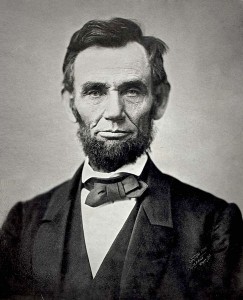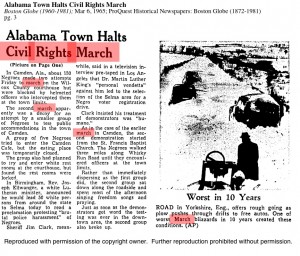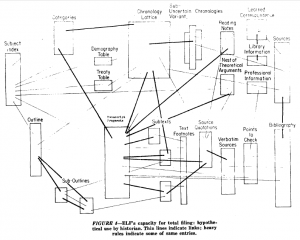This week’s readings proved to be just as interesting as professor Cohen foretold. In Errol Morris’ article Which Came First, the Chicken or the Egg, Roger Fenton’s photograph of “The Valley of the Shadow of Death” was analyzed. The article discussed the photograph’s two slightly different forms:
The first photograph:
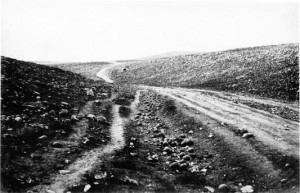
The second photograph:
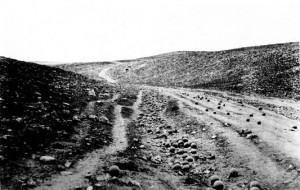
The difference in the two photographs is pretty obvious. One features the post-war landscape with a clear, unobstructed roadway while the other has cannon balls lining the path. But the difficulty presented is answering the questions, “Which photograph came first?” Analysis after analysis throughout the three part reading dumbed down to two basic potential truths to the photographs:
- The first photograph was taken first, chronologically. Unhappy with the uneventful picture, Fenton decided to take cannon balls and place them along the road, adding drama to the shot.
- The second photograph was taken first. Fenton photographed the post-war area as it was, lined with cannon balls. After the first photograph, he removed the cannon balls from the road and re-shot.
Ultimately, I have NO idea which shot was actually taken first. Though many of Morris’ interviewees made logical claims and deductions as to which photo was taken first, technically George, Lionel and Marmaduke came to conclusions using evidence from psychology, photoshop, foot-print finding, and gravity. But in actuality, I don’t think the importance of this article came from which picture came before which picture. I think that the true importance is the idea that something seemingly “obvious” in relation to history and, specifically, historical photographs, is rarely anything close to “obvious.” Morris said it best:
“Nothing is so obvious that it’s obvious. When someone says that something is obvious, it seems almost certain that it is anything but obvious – even to them. The use of the word “obvious” indicates the absence of a logical argument – an attempt to convince the reader by asserting the truth of something by saying it a little louder.”
Another interesting implication that this photograph controversy brought to my attention is the fact that photoshop is not the only method of photographical trickery. Years and years before photoshop, people were stumping viewers, whether knowingly or not, with “staged photos,” “movement of items,” and other things. Reading this article and viewing these pictures makes me question the validity and trustworthiness of basically every historical photograph I’ve ever seen in a textbook, magazine, or elsewhere. How do I know that what I’m viewing is authentic and actual? Short answer: I guess I don’t.
Morris’ other article Photography as a Weapon left me with similar thoughts and feelings. This article analyzed more recent images capturing Iranian missiles shooting towards the sky. However, though printed in prominent newspapers, these photos were tampered with. Morris brings up critical questions in response to this photographic lie:
“Do they provide illustration of a text or an idea of evidence of some underlying reality or both? And if they are evidence, don’t we have to know that the evidence is reliable, that it can be trusted?”

Though a photo expert like Morris are able to point out the repeating smoke patterns and other falsities to prove this photo’s photoshopped front, if I were to see this photograph in the newspaper or online somewhere, I would never question it as inauthentic. However, after reading these articles, I will definitely be viewing any and all images in a different light.

